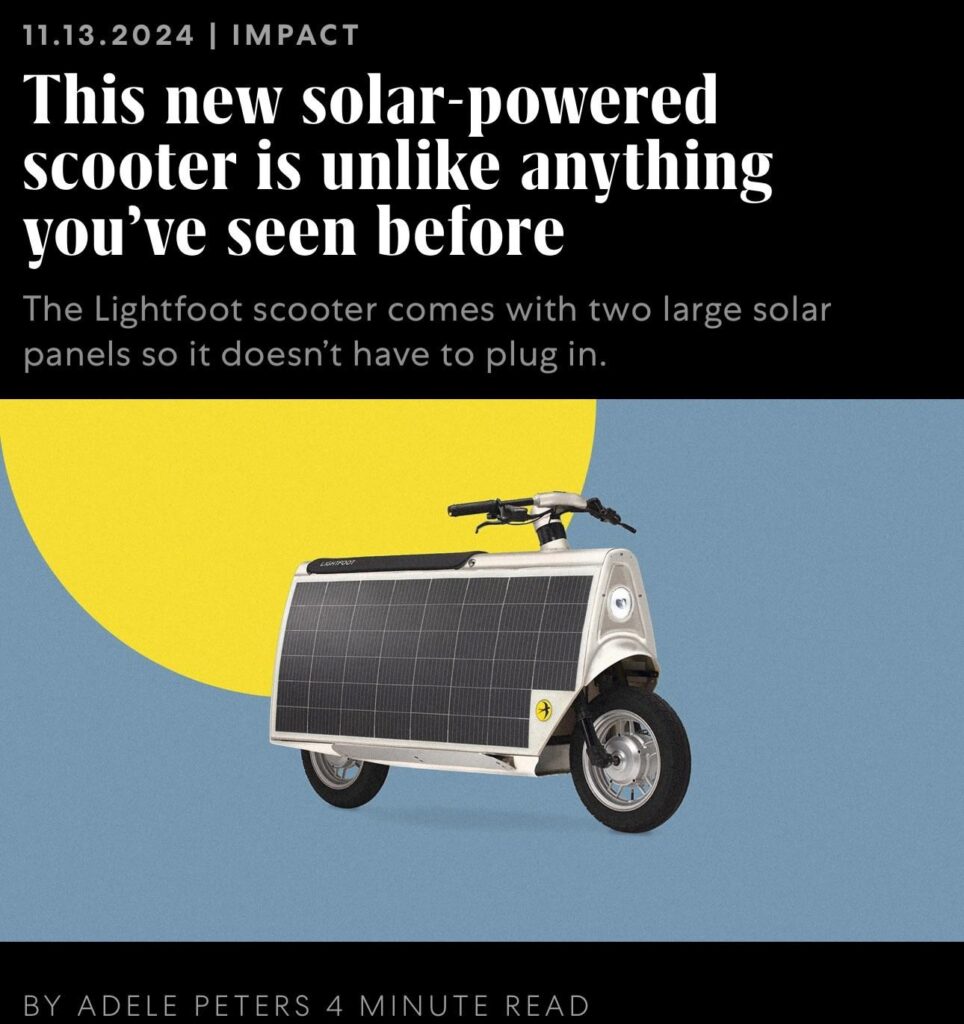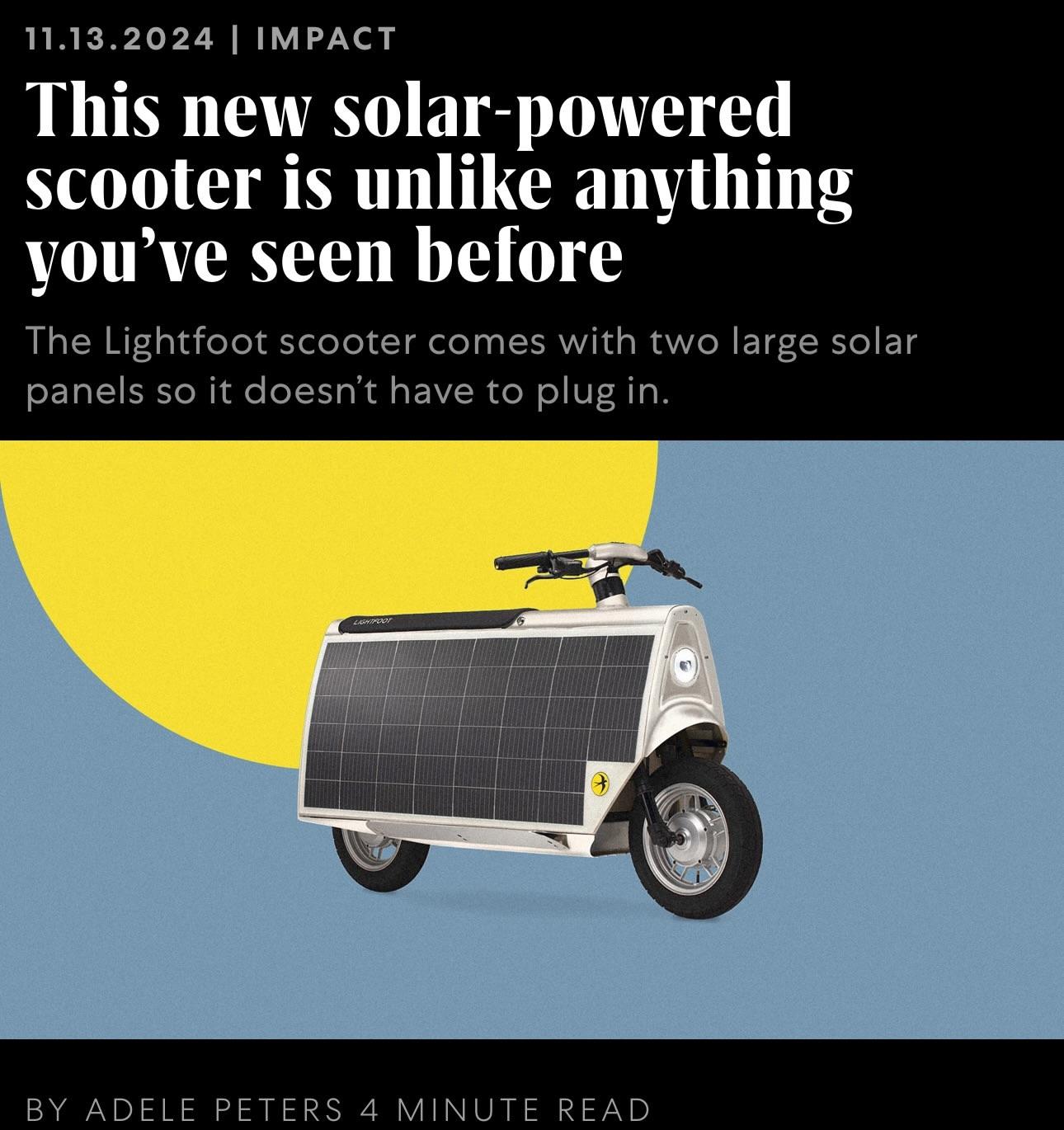
This looks like one of those crazy designs for cars or planes that evolved in the 1950s, which pushed the levels of efficiency with no regard for commercial realities or practicalities of liveability, a la Tucker 48.
This one works though, given avarage city driving ranges. The kilometre distances are:
1. full charge (1.1 kWh battery) = 60 kilometres
2. Sunny day = 32 – 48 kilometres range
2. Cloudy day = 16 – 32 kilometres rage
These ranges could be nearer the maximum than estimated, given the likelyhood that people often stop for extended periods of time, such as to go into a work office or a restaurant for a meal. Stops give the opportunity for optimal charging.
The concept is almost to front load all the bike’s lifetime operational costs in the purchase price, given that the built in panels will provide a large portion of its ‘fuel’. And therein maybe its undoing, because if there is something cheap Chinese cars have taught us is that price matters. Think about it, how many cars are sold with a lifetime of gas? And we’re not going to talk about its looks.
But don’t get me wrong, I love this concept. From a global business case perspective, the savings in normally required charging infrastructure alone would make them worth it. In this sense, these vehicles might be a good buy for municipalities in the role of micro mobility as public transport extensions to the last mile. An added bonus is the distributed power effect of having lots of batteries all over the place, especially useful for resiliency disaster situations.
I wish them luck with this, let’s see if it takes off or if the concept will have to wait till panels are more efficient and Pinninfarina is hired to make it look good.
Source: Renewable Energy Club https://www.threads.net/@renewable_energy_club/post/DCUeBo-ydQi
